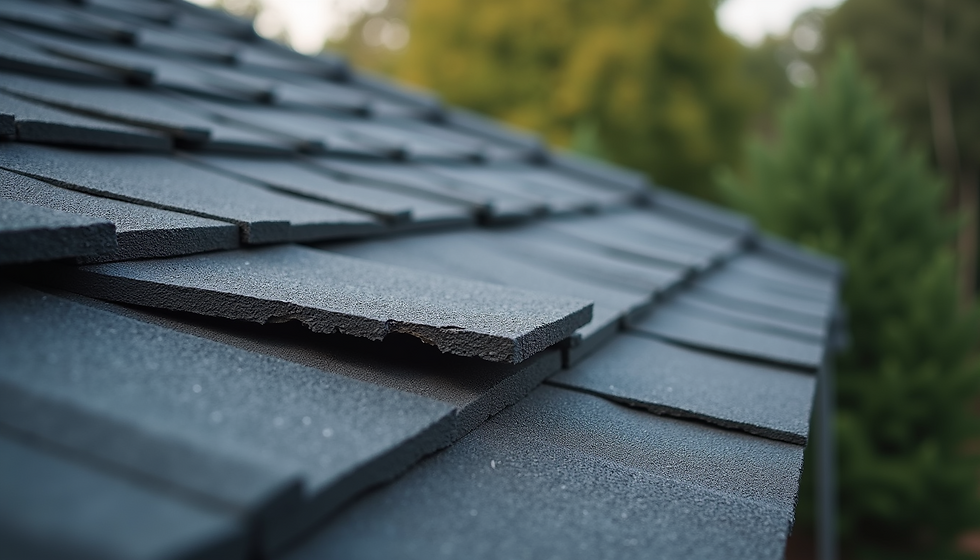Can Roof Trusses Be Modified: Expert Insights
- Tim Morgen

- Oct 6
- 3 min read
Roof trusses are a fundamental part of any building’s structure. They provide support for the roof and help distribute weight evenly across the walls. But what happens when you need to change or adapt your roof design? This raises an important question: can roof trusses be modified? In this article, we will explore the possibilities, limitations, and best practices for modifying roof trusses safely and effectively.
Understanding the Basics of Modifying Roof Trusses
Modifying roof trusses is not as simple as cutting or adding pieces to the existing framework. Trusses are engineered components designed to carry specific loads and stresses. Any alteration can affect the structural integrity of the entire roof system.
When considering modifying roof trusses, it is essential to:
Consult a structural engineer: They can assess the current design and determine if modifications are feasible.
Understand the type of truss: Different truss designs (e.g., king post, queen post, scissor trusses) have different load paths and modification challenges.
Evaluate the purpose of modification: Whether it is to add skylights, change roof pitch, or create additional space, the reason will influence the approach.
Modifications might include cutting webs, adding reinforcements, or changing the truss layout. However, these changes must maintain or improve the load-bearing capacity to avoid compromising safety.

Key Considerations When Modifying Roof Trusses
Before making any changes, several factors must be carefully considered:
Structural Integrity
The primary concern is maintaining the strength and stability of the roof. Trusses are designed to work as a system, so altering one part can affect the whole. Reinforcements or redesigns may be necessary to compensate for any removed or altered components.
Building Codes and Regulations
Local building codes often have strict rules about structural modifications. Compliance is mandatory to ensure safety and legality. This may require permits and inspections.
Cost and Time
Modifying trusses can be costly and time-consuming. It may involve custom fabrication, additional materials, and skilled labor. Sometimes, replacing the trusses entirely might be more economical.
Impact on Other Systems
Changes to trusses can affect insulation, ventilation, electrical wiring, and plumbing. Coordination with other contractors is essential to avoid conflicts.
Safety Precautions
Working with roof trusses involves risks. Proper safety gear, equipment, and professional expertise are necessary to prevent accidents.

Are You Allowed to Modify Manufactured Roof Trusses?
Manufactured roof trusses come with specific engineering certifications and warranties. Modifying them without proper authorization can void warranties and violate building codes.
Most manufacturers explicitly prohibit unauthorized modifications because:
Trusses are designed for specific loads and configurations.
Alterations can lead to structural failure.
Liability issues arise if modifications cause damage or injury.
If modifications are necessary, the correct procedure is to:
Contact the manufacturer or supplier.
Provide detailed plans and reasons for modification.
Obtain approval or request custom trusses designed for the new requirements.
Work with a licensed engineer to ensure compliance.
Ignoring these steps can lead to costly repairs, legal issues, and safety hazards.

Practical Tips for Modifying Roof Trusses Safely
If you have determined that modifications are possible and allowed, follow these practical tips:
Hire qualified professionals: Structural engineers, architects, and experienced contractors should be involved.
Use proper materials: Reinforcements should match or exceed the original truss materials.
Document all changes: Keep detailed records for permits, inspections, and future reference.
Plan for temporary support: During modification, the roof may need temporary bracing to prevent collapse.
Inspect thoroughly after modification: Ensure all connections and reinforcements are secure.
For those wondering can roof trusses be modified, these steps are crucial to ensure the project’s success and safety.
When to Consider Replacing Roof Trusses Instead of Modifying
Sometimes, modifying roof trusses is not the best option. Consider replacement if:
The existing trusses are damaged or deteriorated.
The desired changes are extensive and complex.
The cost of modification approaches or exceeds replacement.
Building codes or manufacturer policies prohibit modifications.
New trusses can be custom-designed to meet your specific needs, offering better performance and peace of mind.
Final Thoughts on Modifying Roof Trusses
Modifying roof trusses is a complex task that requires careful planning, expert advice, and adherence to regulations. While it is possible in some cases, it is not always recommended or allowed. Always prioritize safety and structural integrity when considering any changes to your roof system.
By understanding the challenges and following best practices, you can make informed decisions that protect your property and investment. Whether you choose to modify or replace, professional guidance is essential to achieve the best outcome.




Comments